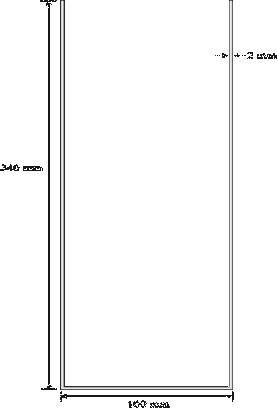(Solved): The diagram shows an empty aluminium time-capsule without a lid, with its height marked as 340 mm, ...
The diagram shows an empty aluminium time-capsule without a lid, with its height marked as 340 mm, its width 100 mm, and thickness is given as 2 mm.
Figure 3?Depiction of a cylindrical aluminium time-capsule, without the lid
- i.
Given that the density of aluminium is 2700 kg m-3, show that the mass of one of the above empty time-capsules is 604.35 g (to 2 decimal places).
- ii.
Consider that the price of aluminium used is £2800 per tonne, and take the mass of aluminium in each time-capsule as 605 g. Assuming that each time-capsule is sold for £19.50, and that there is no waste in the manufacturing process, estimate the value added from the transformation of a tonne of aluminium sheet into time-capsules.
Explain each step in your working.
d.
The compound aluminium fluoride (AlF3) is used as an additive in the production of aluminium by electrolysis. [In conjunction with the mineral cryolite, it lowers the melting point of aluminium and increases the electrical conductivity of the solution]. At laboratory scale, aluminium fluoride can be produced by treating aluminium hydroxide [Al(OH)3] with hydrogen fluoride (HF).
Write a balanced chemical equation for this reaction.
Explain how you can test that your equation is balanced.
e.
The plant producing the time capsules generates about 6 tonnes of mixed combustible waste (from raw material coming in) per year. This goes to a waste-to-energy power station, which has an overall efficiency of 27%. If the heat of combustion of the waste is 8.0 MJ kg-1, calculate the amount of useful electrical energy generated each year by burning the waste. Explain your working and give your answer in units of MJ to 2 significant figures.
